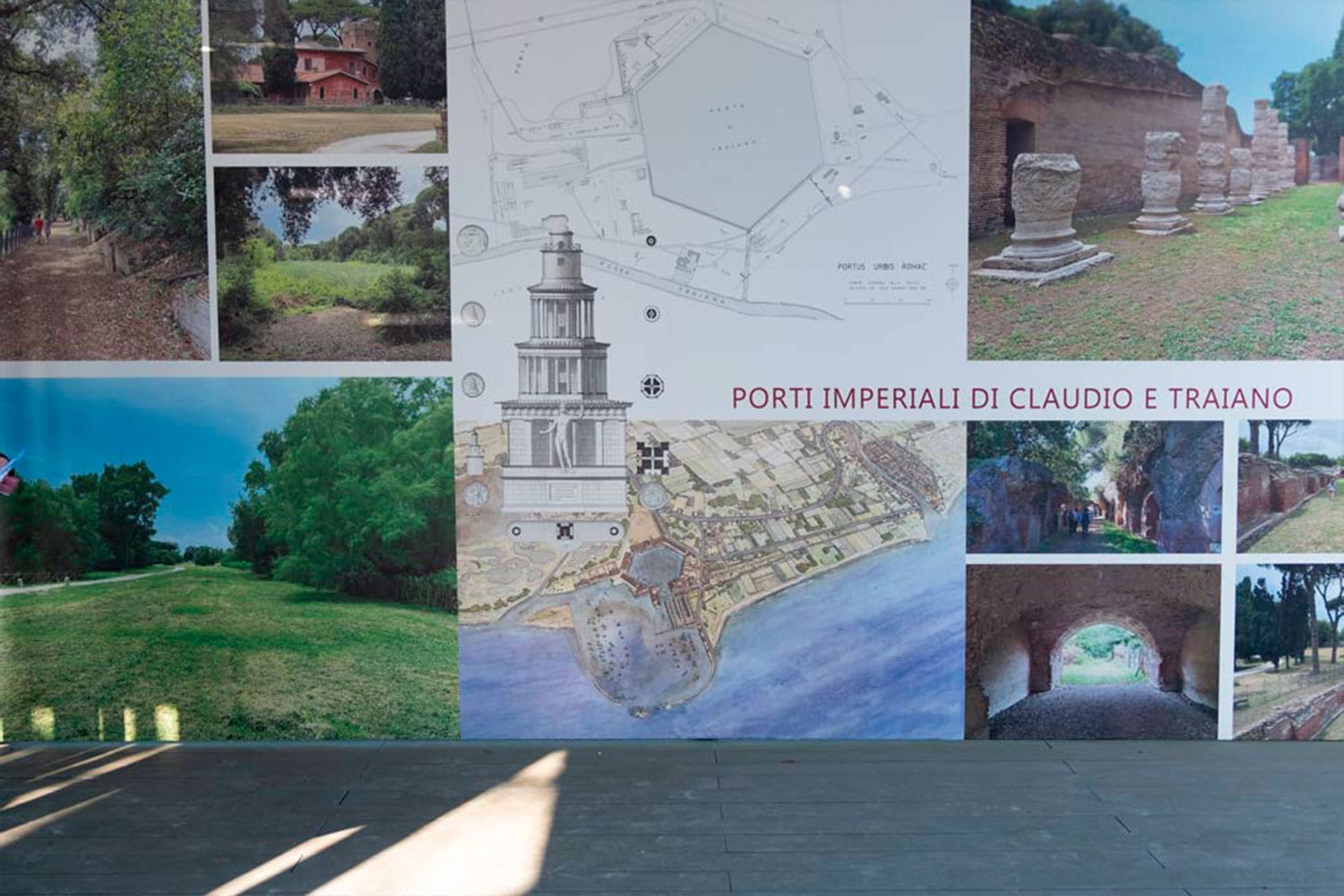The Port of Trajan represented an incredible feat of engineering, reusing the pre-existing structures of the Port of Claudius, such as the lighthouse and docks, to form the external basin of the new port system. Trajan expanded this complex by adding a 33-hectare hexagonal dock, which significantly increased docking points for ships. Furthermore, various canals were dug, including the Fossa Traiana (today known as the Fiumicino canal), which allowed the discharge of the river’s floods towards the sea, helping to protect Rome from floods.
This port soon surpassed Pozzuoli in importance, becoming an important center of trade and transportation. The main constructions were concentrated on the northwest side of the basin, where the Severian Warehouses were located, large goods storage facilities, and the Imperial Palace, a sumptuous building that served as a residence for high-ranking travellers. These buildings overlooked the hexagonal basin, while another large complex of warehouses, the Magazzini Traianei, developed around the Darsena, the internal basin where goods were loaded onto small ships to sail up the Tiber.
During the 2nd and 3rd centuries, the importance of Trajan’s Port led to the birth of a stable settlement which, in 314 AD, obtained the status of a city with the name of Portus Romae. Made autonomous from Ostia, the port center received attention from the central power, interested in guaranteeing efficiency in the supply of the capital.
However, over the centuries, the Portus area was subject to slow swamping, caused by the advancement of the coastline and the changed morphology of the territory, which led to the almost total filling of the port basin between the Middle Ages and the modern. Despite this, the inhabited center survived, as demonstrated by the early Christian Basilica in the area surrounding the Transverse Canal.
Today, the sea is located about three kilometers from the ancient center of Portus, surrounded by airport infrastructure and modern roads. The archaeological area is divided between the Archaeological Park of Ostia Antica and the Sforza-Cesarini family, owners of Trajan’s basin, testifying to its historical and archaeological importance.
INFO
Via Portuense 2264
Fiumicino 00050 (Rome)
Tel. 06.5880880
info@oasidiporto.eu
Located in the municipality of Fiumicino, approximately 1.5 km from Leonardo da Vinci Airport, it is accessed from Via Portuense at the civ. 2264, from the Ponte Galeria-Fiumicino section. Alternatively, following the motorway to the airport, continue further in the direction of Ostia and immediately turn right towards Fiumicino, from here on the left the Via Portuense in the direction of Rome leads to the entrance to the civ. 2264.
How to get there: (we have chosen public transport)
Book your stay in Rome directly and save on commissions.


